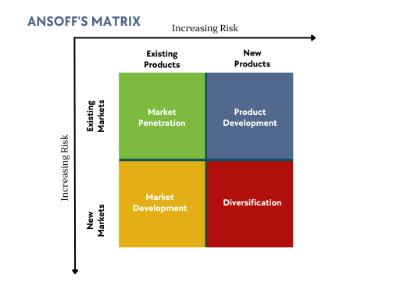
Advice: Identifying your target market and engaging new clients
By Sunny Pahal
Sunny Pahal is a Business Development Specialist with experience in start-up and scale-up business operations. She is also the former Head of Business Development for Sara Davies' (Dragon's Den) company Crafter's Companion. Here she shares her expertise about targeting your ideal clients and engaging them to achieve success.
Identifying your target market is the key to any successful business. You must put in the groundwork and do your research before you even think about customer engagement.
Contact us
We’d be delighted to hear from you. The Enterprise Works team can be contacted via:
Understand your target market
First, you need to understand who your customer is and what your end goal is. This is the ‘pre-work’ that gives you the level of understanding you need before you go and engage.
To make sure you cover everything, you need to include the Who, What, Where, When, Why and How of your market. So, ask yourself the following:
- Who are you trying to target?
- What does your ideal client look like? Get really specific about who they are. What are they looking for? What is the opportunity you are offering?
- Where do you find them?
- When should you target them? Timing is really important. Is your product or service seasonal or trend-related?
- Why would they want your offering?
- What is your USP? It’s really important to narrow this down. If you don’t have one, create one. What makes you stand out from the crowd? Who is your competition? What are they doing?
- How do you reach them? What techniques will you use?
Analysing different groups within your target audience
Analysing and targeting your customer helps focus your thinking. So, once you have defined your target market, break it down even further and create tailored approaches for each section of your audience. This is why it’s so important to know your audience and know where you can find them.
EXAMPLE: Imagine I am bringing a new craft product to market. I know that a section of my target market/audience watches a TV shopping channel but another part of my target market will go into physical shops. I need to reach both sections of my audience but I will need to tailor my approach and use different methods to market the same product to a different demographic.
SWOT analysis
It's useful to carry out a SWOT analysis to identify the Strengths, Weaknesses, Opportunities and Threats for each demographic you think will be most interested in your product/service. This helps you divide your audience into the distinct groups of consumers mentioned above, who have similar needs and desires.
Strengths and weaknesses: What’s good/not so good about your product/service and gives you an advantage/disadvantage in the marketplace and with your competitors?
Opportunities and threats: What’s happening around you (externally) that you can capitalise on/might impact you negatively?
Consider your strengths and weaknesses alongside your opportunities and threats in order to target your marketing efforts more effectively.
Ansof's matrix

I also use the Ansoff’s matrix methodology to weigh up the overall options and risks of any new strategic decisions I’m making, based on whether I’m marketing new or existing products to new or existing markets – so the information from my SWOT analysis is valuable here.
Working your way around the matrix helps you consider the risk and reward between your product or service and your target market development. Market penetration presents the least risk (an existing product/service to your existing customer base), while diversification presents the most risk (a new product/service going out to a new customer base).
Then it’s time to engage with your customers by entering a test phase.
Test, test test!
Don’t just assume that what you have is OK. You need to:
- Test it
- Get feedback
- Review responses and analyse
- Amend and change as necessary
- Test again!
- Then roll it out
Engaging new clients
When you’re positioning your brand, it’s not just about marketing your business. Remember, you are the sales front, so how you interact and conduct yourself is critical to leaving a lasting impression. That’s how you stand out from your competition and attract new clients.
7 ways to target your market
- Create a survey to find out what people think of your product/service, what’s missing and how you can improve it. Use the data to make adjustments to your brand to make it a better fit.
- Be active on social media. Share tips and advice, don’t just ‘sell’. I particularly like LinkedIn for lead generation. It’s great for searching out the right contacts you need to target.
- Go networking. It not only helps you reach a wider audience, it’s also great for finding opportunities for collaboration with businesses who already have a customer base in a market you want to break into.
- Trade shows - find a show where your key targets will be and exhibit your business/service.
- Make a target list and do the old fashioned outreach…pick up the phone/send an email.
- Ask for referrals and recommendations. People buy from people so, while you may ‘sell’ yourself, other people will sell you better.
- Targeted ads online are a great way to reach the audience you want to speak to. The likes of Google and Facebook can locate people more likely to be interested in your product/service based on their ‘likes’, browsing history, interests and demographics.
A few don'ts!
- Don’t do too much in one go. If you have 20 different ideas, you can’t chase them all at once. Niche down and focus.
- Don’t try to appeal to everybody
- Don’t assume that one size fits all. Always tailor your approach.
- Don’t make the assumption that people know who you are and what you offer.
- And finally, sometimes what seems like an incredible opportunity may not be right for your business at that particular time. It’s important to be realistic and to make sure that any ‘opportunity’ will not be detrimental to your brand. It’s OK to put it on the backburner.
About the author
Sunny Pahal is a Business Development Specialist with experience in start-up and scale-up business operations. She is also the former Head of Business Development for Sara Davies' (Dragon's Den) company Crafter's Companion. Here she shares her expertise about targeting your ideal clients and engaging them to achieve success.
